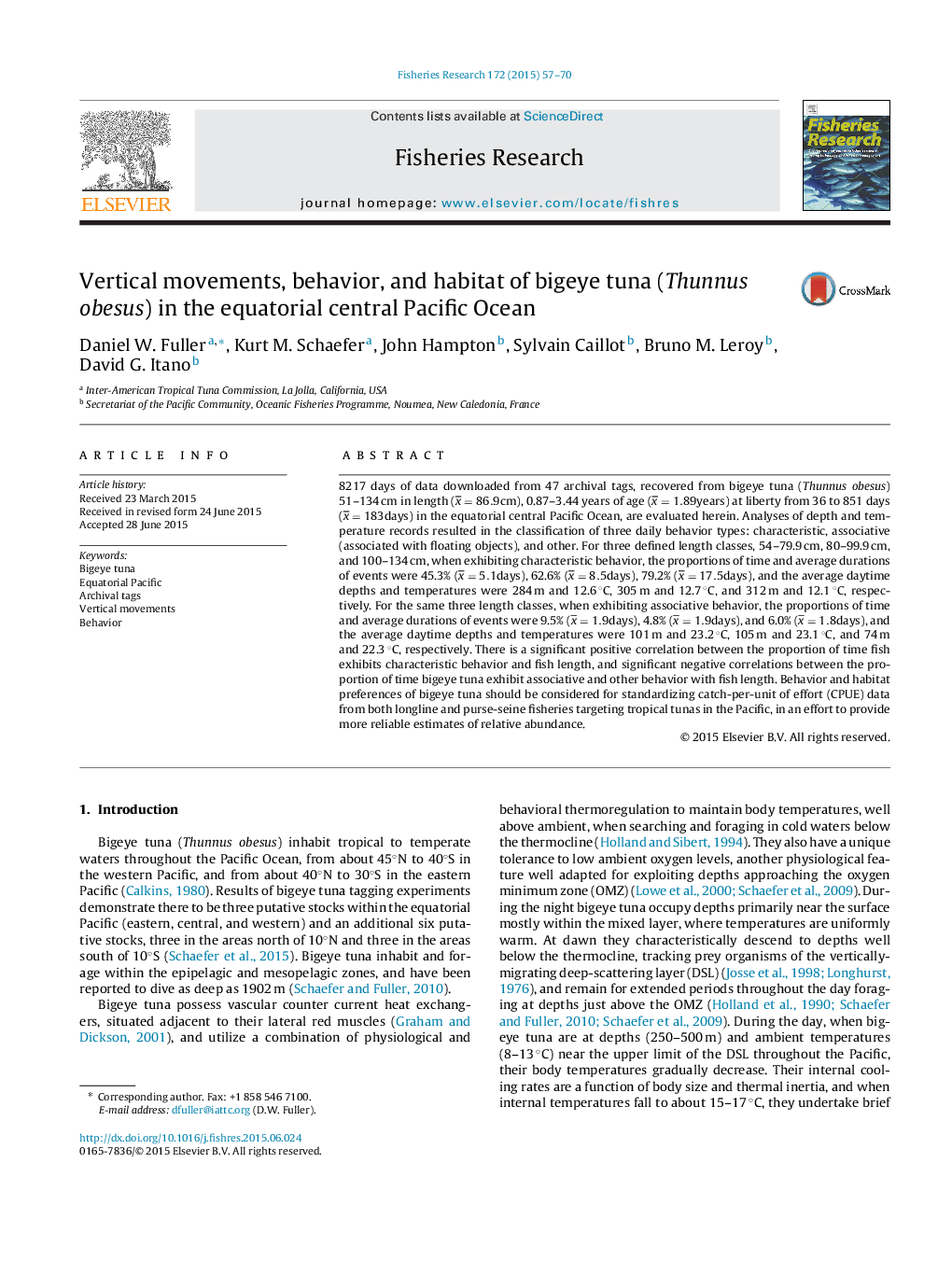| Article ID | Journal | Published Year | Pages | File Type |
|---|---|---|---|---|
| 6385406 | Fisheries Research | 2015 | 14 Pages |
Abstract
8217 days of data downloaded from 47 archival tags, recovered from bigeye tuna (Thunnus obesus) 51-134 cm in length (x¯=86.9cm), 0.87-3.44 years of age (x¯=1.89years) at liberty from 36 to 851 days (x¯=183days) in the equatorial central Pacific Ocean, are evaluated herein. Analyses of depth and temperature records resulted in the classification of three daily behavior types: characteristic, associative (associated with floating objects), and other. For three defined length classes, 54-79.9 cm, 80-99.9 cm, and 100-134 cm, when exhibiting characteristic behavior, the proportions of time and average durations of events were 45.3% (x¯=5.1days), 62.6% (x¯=8.5days), 79.2% (x¯=17.5days), and the average daytime depths and temperatures were 284 m and 12.6 °C, 305 m and 12.7 °C, and 312 m and 12.1 °C, respectively. For the same three length classes, when exhibiting associative behavior, the proportions of time and average durations of events were 9.5% (x¯=1.9days), 4.8% (x¯=1.9days), and 6.0% (x¯=1.8days), and the average daytime depths and temperatures were 101 m and 23.2 °C, 105 m and 23.1 °C, and 74 m and 22.3 °C, respectively. There is a significant positive correlation between the proportion of time fish exhibits characteristic behavior and fish length, and significant negative correlations between the proportion of time bigeye tuna exhibit associative and other behavior with fish length. Behavior and habitat preferences of bigeye tuna should be considered for standardizing catch-per-unit of effort (CPUE) data from both longline and purse-seine fisheries targeting tropical tunas in the Pacific, in an effort to provide more reliable estimates of relative abundance.
Related Topics
Life Sciences
Agricultural and Biological Sciences
Aquatic Science
Authors
Daniel W. Fuller, Kurt M. Schaefer, John Hampton, Sylvain Caillot, Bruno M. Leroy, David G. Itano,
